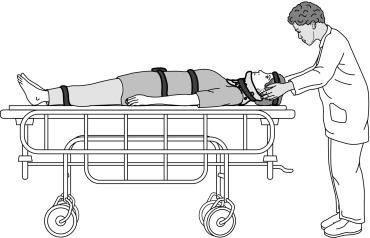Physical Address
304 North Cardinal St.
Dorchester Center, MA 02124
Spinal cord compression is one of the few true neurologic emergencies. The more severe the syndrome, the more acute the injury is likely to have been. Unlike the brain, which may have remarkable functional recovery, the spinal cord, once damaged, rarely recovers function. Patients with cord compression resulting from neoplastic disease of the spine who cannot walk before the onset of treatment will rarely walk again. Diagnosis of spinal cord injury depends on a clear understanding of the anatomy of the cord and the supportive structures.
This chapter will be most useful for patients in whom spinal cord compression is known or suspected. The response to such a call should focus on establishing the diagnosis and assessing the acuteness of the injury.
What is the patient’s general condition?
What are the vital signs? Is the patient in any respiratory distress?
Does the patient have back pain?
Is there history of trauma to the neck or back?
Does the patient have any known cancer or infection?
Back pain in a cancer patient is considered to result from a vertebral metastasis until it is proved otherwise.
How long has the problem been going on?
If trauma or an unstable spine is suspected, give the following orders:
Immobilize the neck (back)
A Philadelphia collar or a backboard should be used to ensure adequate stability ( Fig. 7.1 ). If such equipment is unavailable immediately, the cervical spine can be immobilized by holding the head firmly in a neutral position, using both hands.

Check vital signs
Injury above the C5 level will often acutely compromise respiratory function caused by impairment of diaphragmatic function. Injury of the lower cervical and upper thoracic cord also may cause respiratory failure, although often less acutely. Cervical spinal injury, particularly with complete transection, may result in loss of sympathetic control, causing hypotension and bradycardia. Fever may point to an infectious process.
Obtain imaging
In most hospitals, computed tomography (CT) is the initial imaging of choice with consideration of magnetic resonance imaging (MRI) once the patient has been stabilized. If CT is unavailable, X-rays with anteroposterior, lateral, and odontoid views should be done. Even if there is no suspicion of trauma, the pattern of bony abnormality may suggest subluxation, unsuspected pathologic fracture from neoplasm, osteomyelitis, or other infection.
Notify the neurosurgical team or specialized spinal unit, if available
Direct trauma to the spinal cord can produce a myelopathy, but it is the secondary effects from bleeding, dislocation, or osseous or articular instability that can be devastating; these secondary effects are preventable if properly identified and addressed.
“Will arrive at the bedside in…minutes.”
Spinal cord compression is a medical emergency. Delay may cause irreversible neurologic dysfunction.
Become a Clinical Tree membership for Full access and enjoy Unlimited articles
If you are a member. Log in here